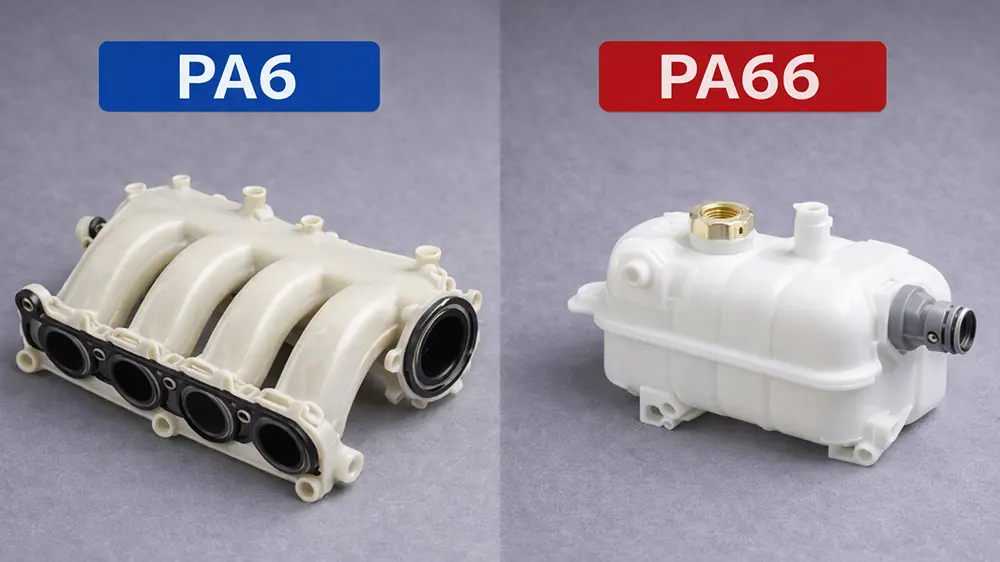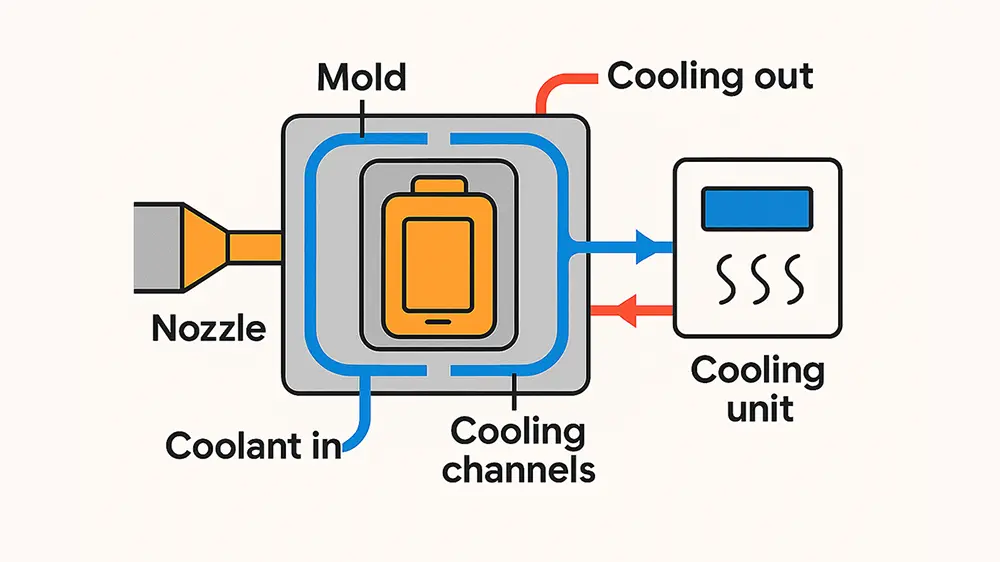The global manufacturing rate continues to rise with more demand. People are increasingly using products that require parts. And sometimes, these parts are small or large plastic materials.
Other times you need to make these CNC machined parts in large numbers. So, production methods have to be more efficient and faster. Even the medical field requires devices created fast.
This has led to the fame of plastic injection molding. It is a production method that turns plastics into parts. The medical space makes use of this process.
Tools like syringes, knee implants use this process. Plastic injection molding makes medical services more efficient. It also makes it likely to create tools for crises. But beyond these, there are other gains of using injection molding in the medical space.
Thus, this article will assess injection molding. We will discuss the gains it gives medical devices. Why should you use injection molding for medical tools? What gain does injection molding give medical tools?
These questions and more, we will discuss here. But first, let us assess what plastic injection molding is. We will assess the types of medical tools you can injection mold.
What is Plastic Injection Molding
Injection molding is a famous creation process. It is a method widely used across many fields. Injection molding, itself is not limited to plastic alone. You can inject mold metal, glass, and other materials. Injection molding is the act of creating parts by injecting melted materials into a mold. Firms design this method to bring about the desired shape.
Plastic injection molding refers precisely to plastic materials. Firms use this means to make plastic products in bulk. It is the act of injecting a melted polymer into a mold. After which, the mold cools, and the material becomes solid.
This means is vital to the plastic creation of products. Medical tools which need plastics use this method. It boosts production efficiency and emergency production.
Types of Medical Devices You Can Injection Mold
Medical tools refer to the tools used in medical facilities. These tools vary widely across many aspects of health care. These could be implants, wearables, or even surgery tools. Whatever the tool may be it is vital to the health space.
Tools in health care are precise. Any minor flaw can cause a big issue in the process. So, the tools have to be 100% efficient and exact. Thus, this needs that you use an efficient creation means. Thus, firms use injection molding for medical tools.
There is a long list of medical tools you can injection mold. But we will focus on those that need plastic materials. It involves many types of plastic, like silicone, polyethylene, etc.
Some of these include;
-
Casing for lab tools
You can use plastic injection mold for lab tools’ cases. Many lab tools need precise cases. These casings are protective, strong, and transparent.
And they are the key to protecting lab tools from harm. It guards lab tools against unwanted access, dust, etc. Firms make most of these cases using plastic injection mold.
-
Test tubes and syringe
Plastic injection mold is ideal for making syringes. Health centers famously use syringes. They are small tools that house fluids. Doctors use these syringes to inject drugs, vaccines into the body.
The body of this syringe is made using plastic injection mold. Test tubes used in labs come from the plastic injection. This shows the essence of plastic injection in health care.
-
Surgical device
Surgery is the main process in health care. It needs the use of many tools. You can make most of these surgical tools using plastic injection. Tools like catheters, IV tubes, syringes, insulin pens, etc. Even surgical gloves come from plastic.
-
Implants
Health centers use plastic injection to make many implants. Implants need strong and wear-resistant matter. So, most health implants come from plastic.
Firms use plastic to make artificial heart implants, knee implants. Even some breast implants come from plastic. Thus, using plastic injection mold allows the mass creation of parts.
-
Orthopedics
Orthopedic tools are vital in fixing deformities of human bones. So, their tools are precise. Most of these parts are made with plastic. Thus, they come from the plastic injection mold. Tools like knee braces, hip support, back supports, etc. Injection molding improves the efficiency of these tools.
The Gains of Injection Molding Health Tools and Products
Now that we know health tools come from injection molding. Let’s pinpoint the gains of this process for these tools. The major gains are efficiency, volume, and crisis use.
But there are many other pros of plastic injection mold. These gains vary based on the use of the health tool. But there are broad gains of injection mold for health tools.
Note that these gains are in no particular order. Some include;
-
Strength
Health tools need to be strong. This is because they are kept in harsh weather. It is either in cold storage or a warm state. So, these tools must endure harsh conditions. These tools also need to be hit resistant and strong.
The strength of tools made with plastic injection is high. Injection mold makes these tools hit resistance. Also, it gives them the force to endure harsh conditions. So, they can endure shaking and heat from constant disinfection.
-
Cost-Effective
Health tools tend to be pricey to make. But using plastic injection molding makes it cost-effective. This is because it creates in bulk. And you can use the machine for repeated creation.
Thus, plastic injection mold gives quality, while maximizing resources. The strength of tools reduces future rework costs. Also, the volume ability reduces the cost of production.
So, plastic injection mold is a cost-effective production method.
It reduces manpower as the process is automated. Thus, health centers don’t need extra staff for the process. And the current staff can be used in other areas.
-
Good Precision
Firms need precise health tools. In health care, you cannot forego precision. A tiny change can cause severe harm. Thus, health tools need to be accurate and precise. With plastic injection mold, you can attain this.
The automated plastic injection method boosts precision. With it, you can make health tools with top precision. Even in bulk, precision is not compromised in plastic injection. This is the main gain of plastic injection for health tools.
-
Volume
Some health tools are formed in large numbers. Tools such as syringes, test tubes are done in bulk. Using a normal creation method would be slow. And in the health space, time is vital. You cannot afford to wait for a syringe when a patient is in urgent need of it.
So, plastic injection allows health centers to make tools in bulk. No matter the volume, using injection mold you can make it faster. Plastic injection molding has a large volume production capacity. This is a major gain of using plastic injection.
-
Customization
Health tools are not like other tools. They need exact sizes, matter, and conditions. They are custom-made for each purpose. So, only a method that allows customization can be fully used.
Plastic injection mold allows the creation of custom health tools. It gives leeway to alter the style as you like. Also, it allows you to make unique products.
So, plastic injection boosts your creative mind. It gives a broad scope of custom designs. You can alter the inner spec of the style. You can also alter the outer spec. All these are done without forgoing quality and precision.
With the plastic injection, you can restyle part design. You can restyle the cases of lab tools. The look of surgical tools or wearables can be restyled. So, your options are not limited to plastic injection. With the help of the engineers, you can restyle your designed part.
This is again for health care which needs unique parts. Syringes are uniquely made. Even knee braces come in unique designs.
-
Material Choice
Although the details of health care tools limit material choice. Plastic injection mold still offers a broad scope of options. It allows you to pick from many matters for production. In this case, it allows you to use many kinds of plastic. This variety of choices profits health tools.
Health tools need precise materials for creation. These matters need certain features to be ideal. This includes; ease of handling, hit resistance, heat resistance, etc.
These features are vital for any material used to make health tools. Thus, various types of plastic are used for health tools.
Some include; silicone, polyethylene, and polycarbonate, etc. These matters are ideal and give certain gains. Silicone offers high flexibility for health tools. So, firms use it for tools that need free movement. Silicone is also strong and has biocompatibility. These are vital features for health tools.
Polycarbonate is also very strong with heat resistance. It helps health parts to be clear and strong. Its features can endure UV light and shake. So, tools like test tubes use polycarbonate plastic. Polyethene also offers strength and smooth surfaces. It is a type of plastic used for health wearables. This is because of its physical look and strength.
In general, plastic matters offer a cost-effective option. They make sure that health tools are of top quality. And that they are strong with all needed features. So, for bulk creation, plastic injection profits health tools.
-
Sterilization
Each health tool has basic standards to meet before use. Each tool has to be sterilized and free from bacteria. They have to be disinfected regularly to avert harm. So, health tools need to endure the sterilization process. And with the use of plastics, they can do this.
Health tools need to be biocompatible. And plastics have this feature. Thus using plastic aids the sterilization method. Using plastic injection also improves this gain.
-
Emergency Use
Firms often need health tools fast and without error. This is because emergency cases may need the creation of a certain tool. For instance, when an accident occurs then a knee brace is needed. You don’t know the tool you will need. Well, except for lab tools and regular surgical tools.
In this aspect, plastic injection molding profits health tools. It helps to reduce the whole time of the creation process.
You can use injection molding for crisis cases. This fast device creation doesn’t forego quality for speed. But you get quality tools at fast rates. The plastic injection process is thus profitable due to its quick delivery.
-
Basic Standards
Health is vital, so there are basic standards for tools. Health tools have to meet certain standards before use. These standards are set by FDA and ISO. The basic standards test the usability and quality of tools.
Using other creation methods, meeting these standards might be hard. But with plastic injection, it is easy since the process has multiple checks. These stringent controls help to meet FDA rules.
So, with plastic injection, FDA compliance is easier. This reduces the time of approval. Meaning you can use your medical tool without much delay.
Conclusion
In summary, medical tools need plastic injection molding. The production process is vital to the creation of medical tools. The gains it offers are unparallel in the market. It enhances the physical look of medical tools. It also improves its internal parts. In all, it improves the elements of medical parts.
Plastic injection molding gives the gains stated above. So, many health facilities use plastic injection. They do it to reduce cost and workforce.
Also, to increase efficiency and quality, these firms use it to create bulk tools. And it helps to comply with government standards. So, why not consider plastic injection for your hospital.
Check out RJC, a plastic injection, and CNC company. It focuses on supplying clients with quality injection parts. It offers expert advice on injection molding.





